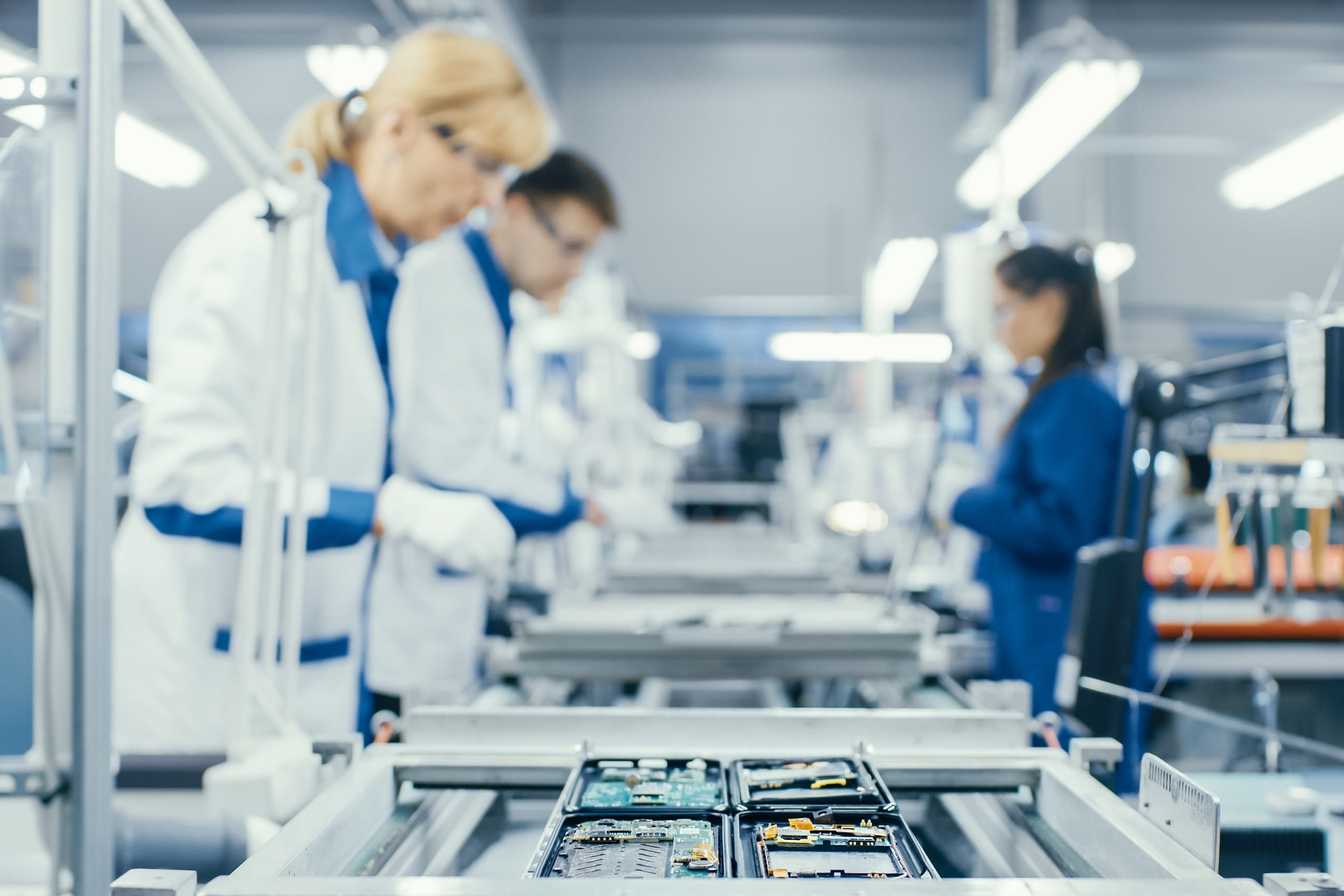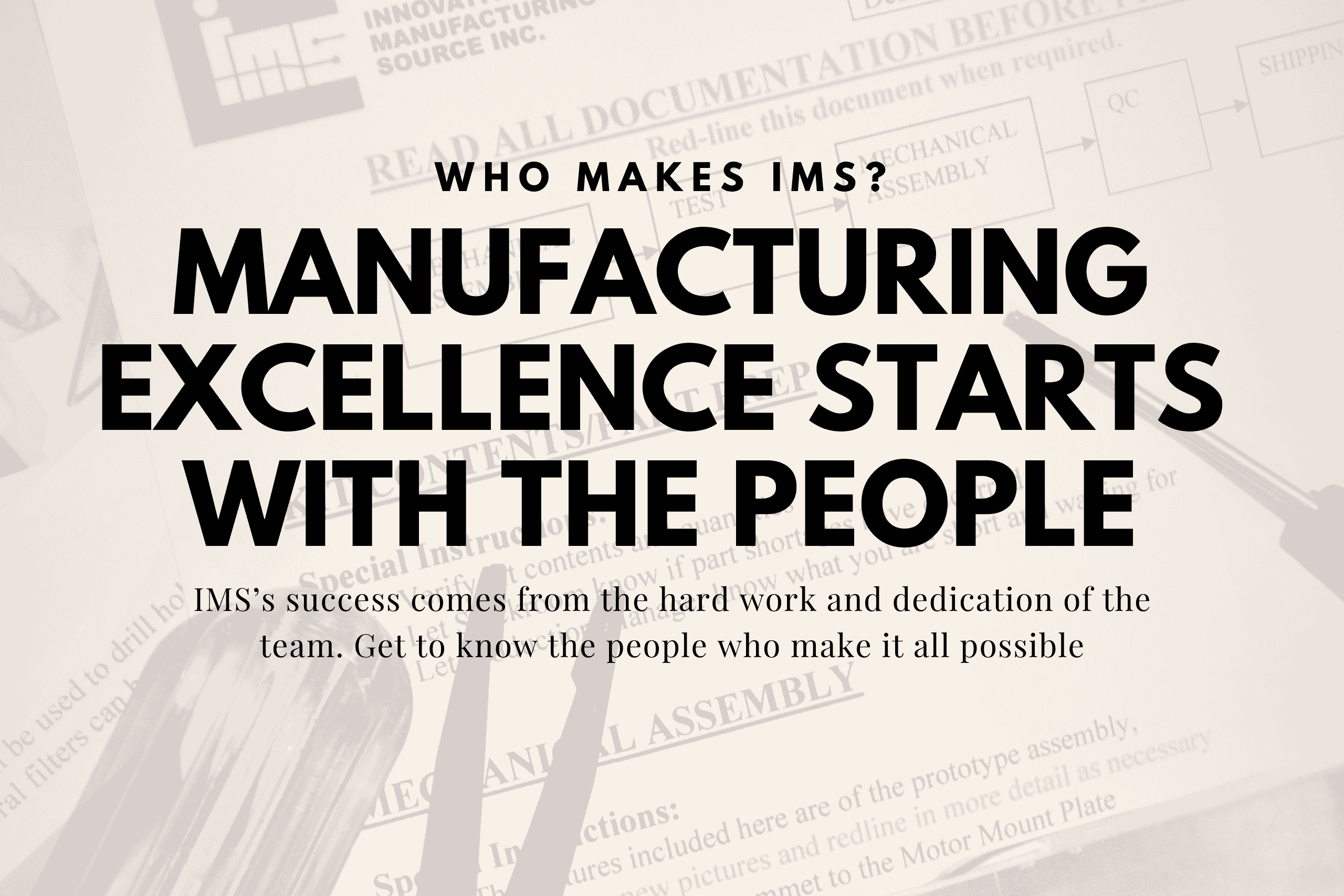For decades, many manufacturers have relied on Quality Control (QC) to catch defects at the final stage of production. While effective in identifying flaws, QC is inherently reactive. In recent years, the focus in electronics manufacturing has increasingly shifted toward Quality Assurance (QA) — a proactive methodology that integrates quality into the entire production process.
This shift represents more than just a change in terminology; it’s a transformation that enhances efficiency, reduces costs, and ensures superior outcomes for both manufacturers and their clients. In this article, we’ll break down the differences between Quality Control and Quality Assurance, explore the advantages of Quality Assurance in electronics manufacturing, and highlight how IMS’s commitment to QA is delivering value at every stage.
What Is Quality Control (QC)?
Quality Control is a reactive process focused on identifying defects in finished products. Typically, QC involves:
- Inspecting products at the end of production.
- Testing for functionality, performance, or compliance with specifications.
- Rejecting or reworking defective items before delivery.
While QC plays a critical role in preventing defective products from reaching clients, it operates as a safety net rather than a preventive measure. Defects caught at the final stage often mean wasted materials, added costs, and production delays—issues that could have been avoided with a more proactive approach.
Common QC Methods in Electronics Manufacturing
- Functional Testing: Ensures the product performs as intended under simulated real-world conditions.
- In-Circuit Testing (ICT): Verifies the functionality of individual components on a PCB.
- Visual Inspection: Checks for soldering defects, alignment issues, and physical damages.
- Environmental Stress Testing: Simulates extreme conditions to ensure product durability.
These methods are excellent at ensuring defective products are caught, but they don’t address root causes or prevent issues upstream.
What Is Quality Assurance (QA)?
Quality Assurance is a proactive methodology designed to prevent defects by embedding quality standards throughout the entire manufacturing process. Unlike QC, which inspects finished products, QA focuses on:
- Establishing robust processes and workflows to minimize variability.
- Conducting checks and validations at every stage of production.
- Empowering teams with training and tools to prioritize quality at each step.
Key QA Practices in Electronics Manufacturing
- Process Mapping: Analyzing workflows to identify potential risks and inefficiencies.
- Design for Manufacturability: Ensuring product designs are optimized for smooth production.
- Standardized Work Instructions: Providing clear, detailed guidelines for each step of the build process.
- Real-Time Process Monitoring: Using data analytics and IoT devices to track metrics like temperature, pressure, and cycle times.
- Root Cause Analysis (RCA): Investigating and resolving underlying issues to prevent recurring problems.
By focusing on process improvements and early detection, QA ensures that quality becomes a built-in feature rather than an afterthought.
Key Differences Between QC & QA
| Aspect | Quality Control (QC) | Quality Assurance (QA) |
|---|---|---|
| Focus | Detecting defects in finished products | Preventing defects during production |
| Timing | End-of-line inspection | Continuous throughout the process |
| Approach | Reactive | Proactive |
| Goal | Identify and fix problems | Build quality into the process |
| Cost Implications | Higher costs from rework or scrap | Lower costs through defect prevention |
Why the Shift to Quality Assurance in Electronics Manufacturing?
In industries as complex as electronics manufacturing, a QC-only approach can lead to missed opportunities for improvement. Transitioning to QA offers significant advantages:
1. Improved Product Consistency
By embedding quality into every stage, QA minimizes variability in production. For example, real-time process monitoring can detect issues like temperature fluctuations in soldering processes, allowing adjustments before defects occur. This is especially critical in electronics, where even minor inconsistencies can impact performance.
2. Reduced Waste and Costs
With QA, defects are prevented rather than corrected. For instance, design reviews and process validation ensure that products are optimized before production begins, reducing the risk of rework or scrap. This proactive approach translates to lower costs and more predictable timelines for clients.
3. Enhanced Customer Satisfaction
QA emphasizes delivering products right the first time. Clients receive consistent, high-quality outcomes that build trust and strengthen long-term partnerships.
4. Compliance with Industry Standards
As regulations like IPC standards and ISO certifications become increasingly important, QA ensures compliance through robust documentation, traceability, and adherence to best practices.
How QA Is Implemented in Electronics Manufacturing
Quality Assurance isn’t a one-size-fits-all solution; it requires tailored processes to address the unique demands of electronics manufacturing. Here’s how QA might look in practice:
- Supplier Quality Management: Ensuring materials and components meet high standards before entering production. This includes audits, certification checks, and rigorous incoming inspections.
- In-Process Checks: Conducting real-time inspections and tests at key production stages, such as solder paste application, component placement, and reflow soldering.
- Process Validation: Continuously reviewing and refining workflows, such as optimizing pick-and-place programming for PCBs to ensure accuracy and efficiency.
- Employee Training: Equipping staff with the knowledge and tools to recognize and address potential quality risks at every step.
- Data-Driven Monitoring: Leveraging advanced analytics and IoT-enabled equipment to track metrics like yield rates, defect trends, and equipment performance.
IMS’s Commitment to Quality Assurance
At IMS, we’re proud to take a proactive approach to quality. Our shift from Quality Control to Quality Assurance in electronics manufacturing reflects our dedication to providing clients with superior products and exceptional value. Here’s how we’re making it happen:
✓ Training Across Departments: From quality staff to production teams, we’re equipping our workforce with the knowledge and tools needed to integrate QA into every process.
✓ Enhanced Processes: We’re implementing in-process checks and advanced monitoring systems to catch potential issues before they escalate.
✓ Client-Centered Approach: By focusing on defect prevention, we’re ensuring that our clients receive consistent, high-quality products that meet their needs.
✓ Traceability and Reporting: Robust documentation ensures traceability for every product, offering clients transparency and confidence in the manufacturing process.
This proactive shift enables IMS to consistently meet today’s standards while anticipating the evolving demands of tomorrow’s electronics industry.
Building a Solid Circuit of Trust With QA
As the EMS landscape evolves, so too must the approach to quality. IMS’s commitment to Quality Assurance in electronics manufacturing ensures that every product we deliver reflects precision, reliability, and excellence at every stage.
Is it time to take your production to the next level? Contact IMS Electronics Manufacturing today to discuss how our QA-driven processes can support your next project and deliver results you can trust.




